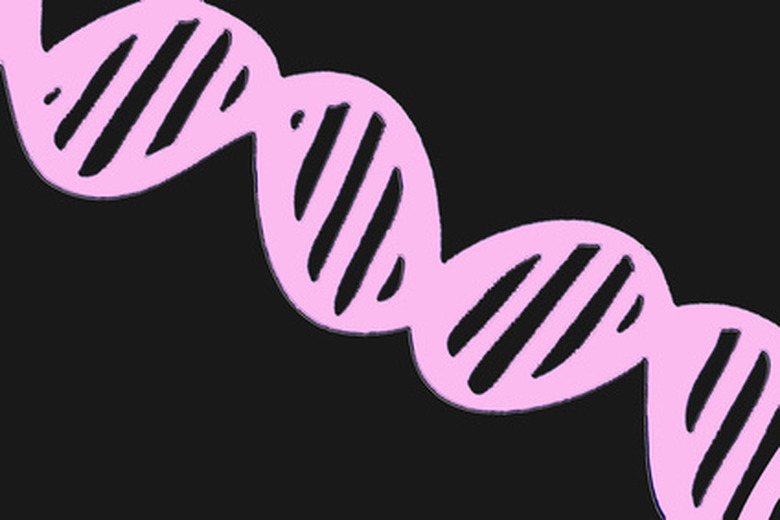What Is The Function Of Tracking Dye In Gel Electrophoresis?
Gel electrophoresis is a commonly used laboratory technique with many practical applications including DNA fingerprinting and genome sequencing. The process involves separating DNA fragments using an electrical current while tracking the rate of molecular movement through a filtering gel.
Adding blue or orange tracking dye to colorless DNA samples allows you to see your sample and obtain information about how DNA molecules move during electrophoresis. Identification is based on the size of DNA bands on the gel after migration of molecules.
How Gel Electrophoresis Works
How Gel
Electrophoresis Works
**Gel electrophoresis** pulls DNA fragments through a gel using an electrical current to isolate and identify DNA molecules by size and electrical charge. The gel is often made with agarose powder — a polysaccharide extracted from seaweed.
Agarose is added to a buffer solution of water and salt, and the mixture is heated and cooled to make a porous gel that will act as a filtering matrix during the electrophoresis procedure. The gel is then placed in an electrophoresis unit and covered with buffer solution that conducts electricity.
Solutions containing DNA and loading dyes are pipetted into small wells in the gel that must be made during gel preparation. Dyes help you clearly see the sample that you are adding to the gel wells located near the negative electrode of the electrophoresis unit.
A positive electrode is located on the opposite end. A known standard of DNA fragments is placed in the first well that will create a ladder of DNA bands for comparison and identification purposes.
The phosphate backbone of DNA molecules gives DNA a negative charge. Opposites attract so, consequently, DNA molecules are attracted to the positive electrode and start to move, or "migrate," when an electrical current is turned on.
Smaller sized DNA fragments travel faster than larger fragments because they encounter less resistance as they migrate through the gel's porous matrix. Similar sized DNA fragments form bands of DNA in the gel.
Loading Dye Purpose and Importance
Loading Dye Purpose and
Importance
DNA is colorless, so adding tracking dyes to a sample helps you determine the rate of movement of different size protein molecules in the gel during electrophoresis. Examples of loading dyes that move with the DNA sample include bromophenol blue and **xylene cyanol.**
The chosen dye should not be reactive or alter the DNA. Bromophenol blue is a dye used to track smaller sized DNA strands containing about 400 base pairs, while xylene cyanol is better for larger DNA strands with up to 8,000 base pairs. The chosen dye should not be reactive or alter the DNA.
Role of Glycerol in Agarose Gel Electrophoresis
Role of Glycerol in
Agarose Gel Electrophoresis
When readying your DNA sample for electrophoresis, you will need to add glycerol and water along with loading dyes. Glycerol is a heavy, syrupy substance that gives more density to the DNA sample before it is inserted in the wells at one end of the gel sheet.
Without glycerol, the DNA sample would disperse instead of sinking and forming a layer in the well like it's supposed to do to form a ladder of DNA.
Tracking Dye in SDS PAGE
Tracking
Dye in SDS PAGE
Sodium dodecyl sulfate polyacrylamide gel electrophoresis (SDS PAGE) is a technique suitable for separating proteins and amino acids, which are smaller and more complex than linear DNA molecules. Polyacrylamide (SDS PAGE gel) is used instead of agarose gel for electrophoresis.
Bromophenol blue (BPB) is added to the sample buffer as a tracking dye that moves in the same direction of separating proteins and demarcates their leading edge.
Role of DNA-Binding Dye
Role of DNA-Binding
Dye
DNA-binding dye such as orange colored ethidium bromide can be added to gel or to the electrophoresis buffer. As the name suggests, the dye attaches to the DNA molecule.
Great care must be taken when handling this mutagenic dye because it can bind to DNA in skin cells. Unlike tracking dyes, ethidium bromide fluoresces brightly under UV light, making the DNA bands visible.
Cite This Article
MLA
Dowd, Mary. "What Is The Function Of Tracking Dye In Gel Electrophoresis?" sciencing.com, https://www.sciencing.com/what-is-the-function-of-tracking-dye-in-gel-electrophoresis-12299095/. 22 July 2019.
APA
Dowd, Mary. (2019, July 22). What Is The Function Of Tracking Dye In Gel Electrophoresis?. sciencing.com. Retrieved from https://www.sciencing.com/what-is-the-function-of-tracking-dye-in-gel-electrophoresis-12299095/
Chicago
Dowd, Mary. What Is The Function Of Tracking Dye In Gel Electrophoresis? last modified March 24, 2022. https://www.sciencing.com/what-is-the-function-of-tracking-dye-in-gel-electrophoresis-12299095/
